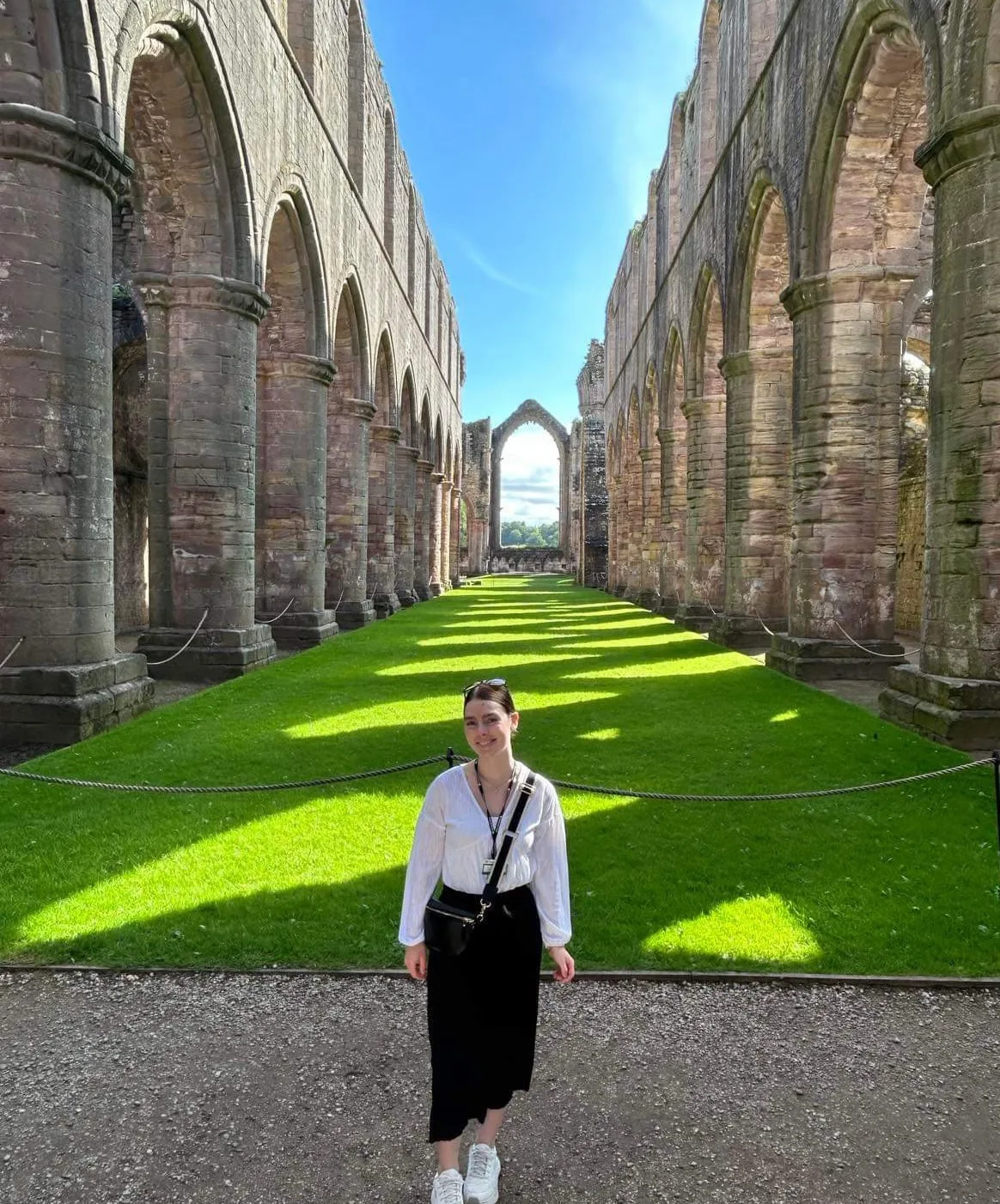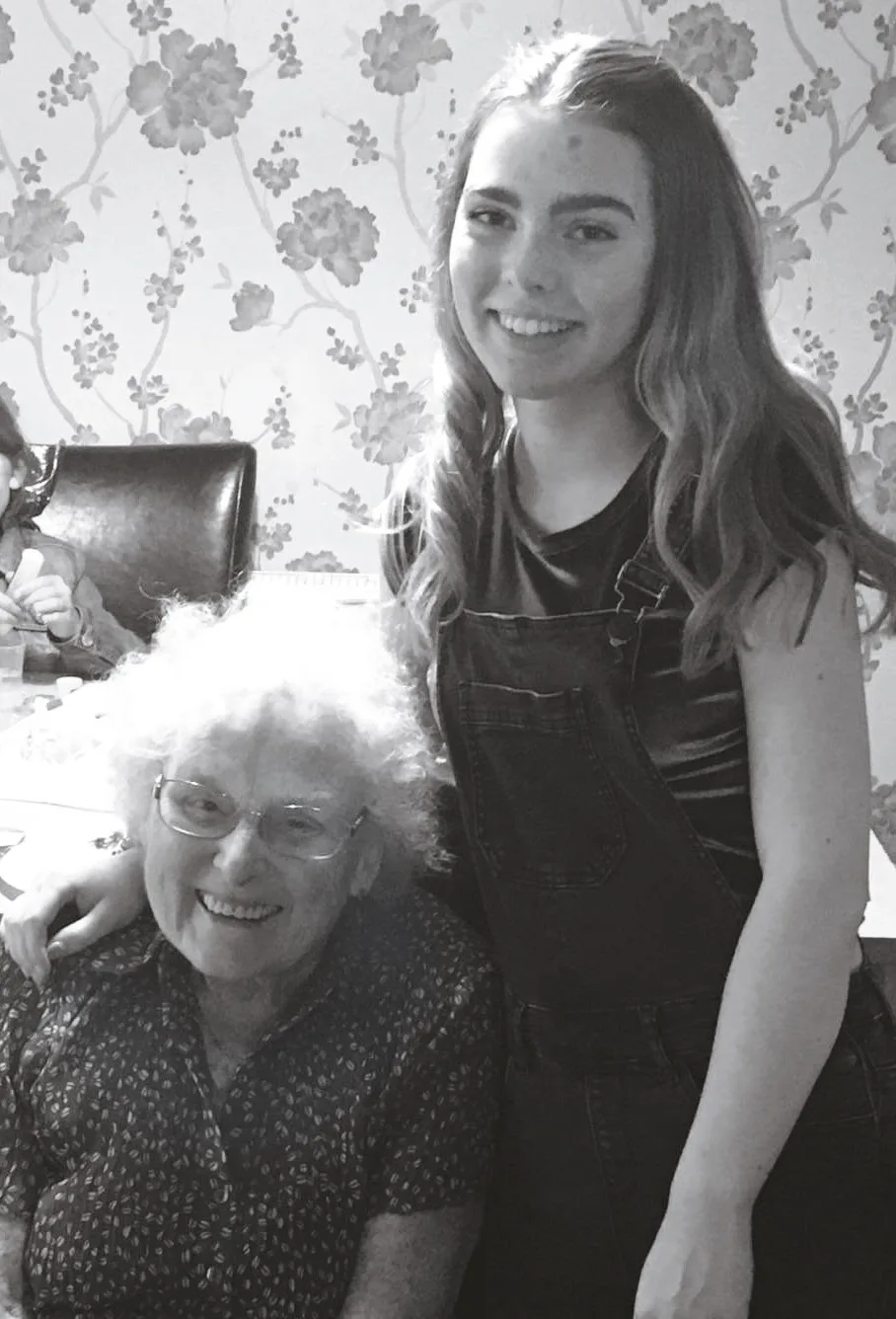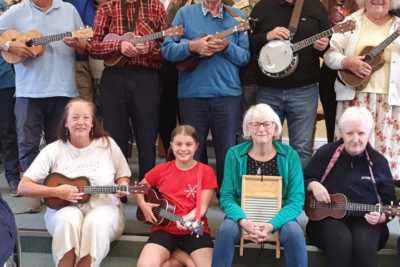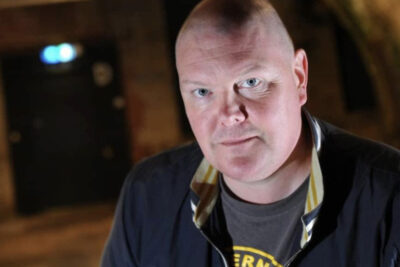
CHURCH CRAWLING
by Hannah Dunford
Hannah Dunford talks about her exploration into churches and spirituality.
Our story begins in the nave of St John’s, Ben Rhydding. Picture a young girl sitting beside her grandmother, singing along to hymns and spouting frequent amens, desperately waiting for the complementary biscuits that would follow imminently. Sound familiar?
This was my experience, not unlike many a young person, accompanying my grandmother to church (albeit intermittently). It was a perfectly normal experience of church – warm and joyous and yet slightly mundane. Having been born and raised in a small village in Lancashire, the quiet life was what I was used to and what I loved. But going to church was not a prominent feature of that quiet life unless it involved spending time with my grandmother. Fast forward a decade, and I no longer find myself robotically whispering amens under my breath, but instead touring the grand cathedrals of Europe and equally marvelling at the quaint parish churches of Lancashire and Yorkshire. At 20, I can now begin to express the shift in recent years, whereby my interest in churches took me on a spiritual journey that I scarcely envisaged from the nave of St John’s.

Hannah on her voyage of discovery
Having been fascinated by historical buildings from a young age, my interest in churches as a specific category only developed when I started university at 18. While reading History, I developed an interest in church architecture, purchasing Denis R. McNamara’s ‘How to Read Churches’ as a pocket guide and ‘borrowing’ my grandmother’s old copy of Richard Taylor’s similarly titled, ‘How to Read a Church’. It felt like a calling, finding the latter in her collection of books as if she were watching over me with enthusiasm and support. To begin with, the interest was purely secular, a desire of mine to learn about what has made humans ‘tick’ throughout the ages. But as I began spending more and more time within church buildings, the scepticism I had previously felt subsided, and I began to embrace whatever spiritual feelings I encountered truly. The hobby, which I and similarly passionate people like to dub ‘church crawling’, has taken me on many a meaningful journey over recent years and has amplified memories from more distant ones. From the hilltops of Tuscany, where I spent every summer with my grandmother before her passing, to the hidden streets of York and remote spots nestled deep in the Ribble Valley, one of which, St Eadmer Church, Bleasdale, was my place of Christening. What began and continues to be a fascination with history subsequently developed into a fascination with the positive power that church buildings can have on the mind.
It felt like a calling, finding the latter in her collection of books as if she were watching over me with enthusiasm and support.
Upon recent travels through Europe, I was fortunate enough to explore numerous churches of different styles and from different centuries. It has to be said before I begin that one does not need to seek out and enter numerous churches whilst travelling the European mainland to see the importance of Christianity. Travelling via train, one need simply glance out of the window to see that church spires dominate the horizon. It was, however, amazing to witness them in a personal manner and to see such an abundance of devotional material whilst appreciating the architectural achievements before me. I was moved to tears in the church of St Sebaldus, Nuremberg, and was drawn to light a candle in honour of my grandmother, without whom I do not believe I would have such a passion for ecclesiastical history. A couple of train journeys later, I found myself standing at the foot of the chancel in St. Peter’s Abbey, Salzburg. Gazing upwards with wide eyes at a hanging golden crucifix, I became overwhelmed by the silence, albeit in a deeply euphoric way.
They are spiritual time machines, connecting us to our quotidian history.
Moreover, in the summer of 2022, I had the pleasure of visiting La Verna in Tuscany, the memories of which became even more profound when I recently encountered an incredible altarpiece in the Church of the Annunciation, Bratislava, depicting St. Francis receiving the stigmata on that very same site. The Inner-City Parish Church, Budapest, had a handful of original frescos, ranging from the eighth century (if my memory serves me correctly) through to the fifteenth. Much to my travelling companion’s slight displeasure, I spent many an afternoon surveying, in wonder, such beautifully preserved paintings as these, analysing the symbolism within each biblical scene or saintly portrait. However, within St Michael’s Church, Vienna, I would encounter what became a central highlight of my trip: two original frescos, both showing time-induced wear and tear but nonetheless clear enough to deduce their visual and symbolic meanings. The right-hand fresco depicted what I understood to be a priest performing the ‘first elevation’ at a Catholic Mass. It was special, to say the least, to see a preserved medieval fresco depicting a centuries-old action brimming with spiritual significance and having been witnessed by countless people throughout the ages.

Being within church buildings is a great way of seeing tangible history and can inspire a feeling like no other. They are places that capture your breath, that move you to tears, that make you feel tied to the past in a sense so rare that you want to bottle the feeling. A feeling so overwhelming, so full of depth and meaning. Spaces that you want to be in before everyone wakes in the morning just to enhance the sense of peace that they provide. They are gateways to the lives and emotions of all those who came before, allowing us to trace their footsteps and feel their presence. They are spiritual time machines, connecting us to our quotidian history. For believers and non-believers alike, churches can provide a sense of belonging and perspective in a fast-paced and ever-modernising world. Being a church volunteer at St Mary’s Studley Royal, Ripon, has enabled me to spend extended hours within such a space and communicate with visitors about what the church means to them. Surprisingly, a majority of the visitors that I hold conversations with identify as non-believers or non-practising Christians. And yet, they often confer the sense of spirituality they feel within church buildings.
“I have never felt more myself than I do now, having opened up to new possibilities, emotions, and experiences.”
It is a joy to see people from all walks of life utilising these spaces to seek comfort and peace and respect everyone within, no matter what religion or practice they subscribe to. I find contentment in visiting and promoting the incredible ecclesiastical sites of Lancashire and North Yorkshire, my two home counties. Volunteering at Fountains Abbey and having the opportunity to help with events such as The Mass for the Feast of St Bernard (which was celebrated in the abbey cellarium) not only allows me to feel connected to the past but to feel connected to the present, and to the people of Yorkshire and surrounding areas who share these special days with me. There is so much to be gained from spending time in spiritual spaces; the energy that flows from person to person is meditative, almost hypnotic (something I often witness first-hand whilst volunteering). I believe that we should encourage the use of churches as places for mindfulness and self-reflection. Their conservation is of utmost importance to me. I believe that part of the future of church buildings, especially those of a rural parish nature, lies in ensuring and encouraging their accessibility to the wider public.

Hannah with her grandma
In many aspects of life, meaning and purpose are underpinned by love. Love led me to shed tears at the site of candles lighting up dark corners, each with its own story of love and grief radiating from it like waves of energy. It was that very energy that guided me to light a candle of my own in Nuremberg in honour of my grandmother, as if my conscious mind had kneeled before my subconscious to allow a raw flow of emotion. Churches are places where the human experience can be felt most intensely. People enter these spaces to feel vulnerable and protected at the same time, and to allow themselves to feel whatever they may usually bury beneath the surface. I was sceptical of those who pursued religion throughout my childhood and early adolescence. Life was just black, white, and above all, logical. And yet, I have never felt more myself than I do now, having opened up to new possibilities, emotions, and experiences. I do not believe I would have allowed myself such freedom had I not experienced loss, grief, and the restraints of young adulthood during the pandemic, all of which taught me the art of self-reflection and questioning. For me, it is about people and the chains of energy they leave behind. Being within a space, my grandmother would have felt spiritually connected to and leaving a flame behind felt like leaving my own energy for her. It felt boundless. It is in her memory that I continue to nurture this passion, and it is the memories of our time together within St John’s that give it purpose.
NorthernLife Nov/Dec 23




